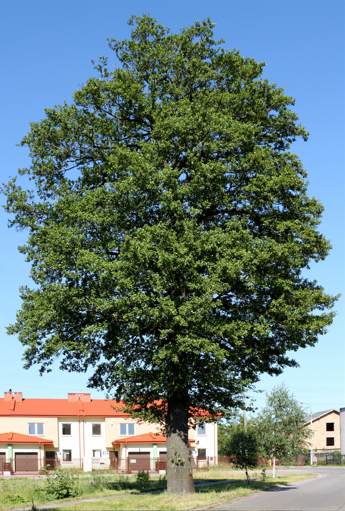As pointed out in my previous post, the perception of things, may vary among individuals, even pertaining to things, such as a single common alder tree. Someone may not even perceive it standing there, such as due to looking in a different direction at something else, someone else may perceive it as a landmark they associate with home, and someone else may be seriously convinced that this tree has come from outer space, to eat us all.
At the end of the day though, it is just a tree, which can’t do anything about how it is perceived by the humans passing by. And all the reports by the humans, saying something about the tree, don’t necessarily say anything about the tree at all, aside from the subjective impression by the person, such as: “Standing below this tree, it surely has to be the biggest tree in the whole wide world.”
So, having become quite curious about this tree, as it seems to be the talk of the town, we can take a methodical approach. Such as measuring its height, something no one even needs to climb the tree for, as we can i.e. measure a distance from the tree’s foot to a spot on the ground nearby, and from there measure the angle to the top of the tree – and with this, we have some numbers, with which we can calculate the side x of a triangle, as the height of the tree. And while we are physically at this tree, we can also keep an eye on it for some time, to check whether it happens to eat any human, to then likely establish, that: “No, this tree has not eaten any human in the time observed, nor does there seem to be any indication thereof. So, this tree is safe, in such regard.”
This is, where we are in the realms of science. Which is quite sweet. In the morning, part of the town was in panic or uproar about aliens coming to devour us all, and at a town gathering later that day, the town can at least come to an agreement, that this is not the case, and even conclude: “This tree is not known for having eaten, or going to eat, any human – or at least it doesn’t seem to be gluttonous about it.”
And since science has served us so well, and even saved the day for the town, we are likely to keep using it, and even may expand knowledge about this tree, such as taking a look at its leaves, and so on.
This is nice. But, as we gather the data, and put it together, what we are doing, is to paint an abstract picture of this tree. As in, a painting of the tree, with letters and numbers all surrounding it on the painting.
And on one hand, this brings us back to where we started, as in townsfolks passing by this picture, having individual perceptions of it, ranging i.e. from: “What a proud work of modern science!” to “Soo… the tree is a mechanical monster of sorts, and it doesn’t even say, that it is not from outer space!”
And on the other hand, the more complex it gets, with datapoints and whatnot, the more open it becomes to various individual interpretations even by the ones involved with its study. As in, to measure the height of a tree, for sake of comparing it to other trees, to establish, which tree stands taller, that’s quite simple. But to measure the length of individual branches, to establish whether a wild growth tree species will at a certain height, always have branches of the same length/s, that may apply even to five trees in a row, but perhaps not to a sixth tree in a bit different type of soil. And if one now wants compare the types of soil, to find like a mathematical rule about how long branches will be for which type of whichever soil, one may end looking for something that doesn’t exist like this, respectively, may start seeing patterns that don’t exist, especially when ignoring other factors, that may be quite relevant from the sounds of it, such as the amount of rain, in which season. Let alone, when there is pressure to produce some conclusions this budget-year.
And far worse, these matters become very problematic, when “malicious intent” enters or even gets to have the floor.

